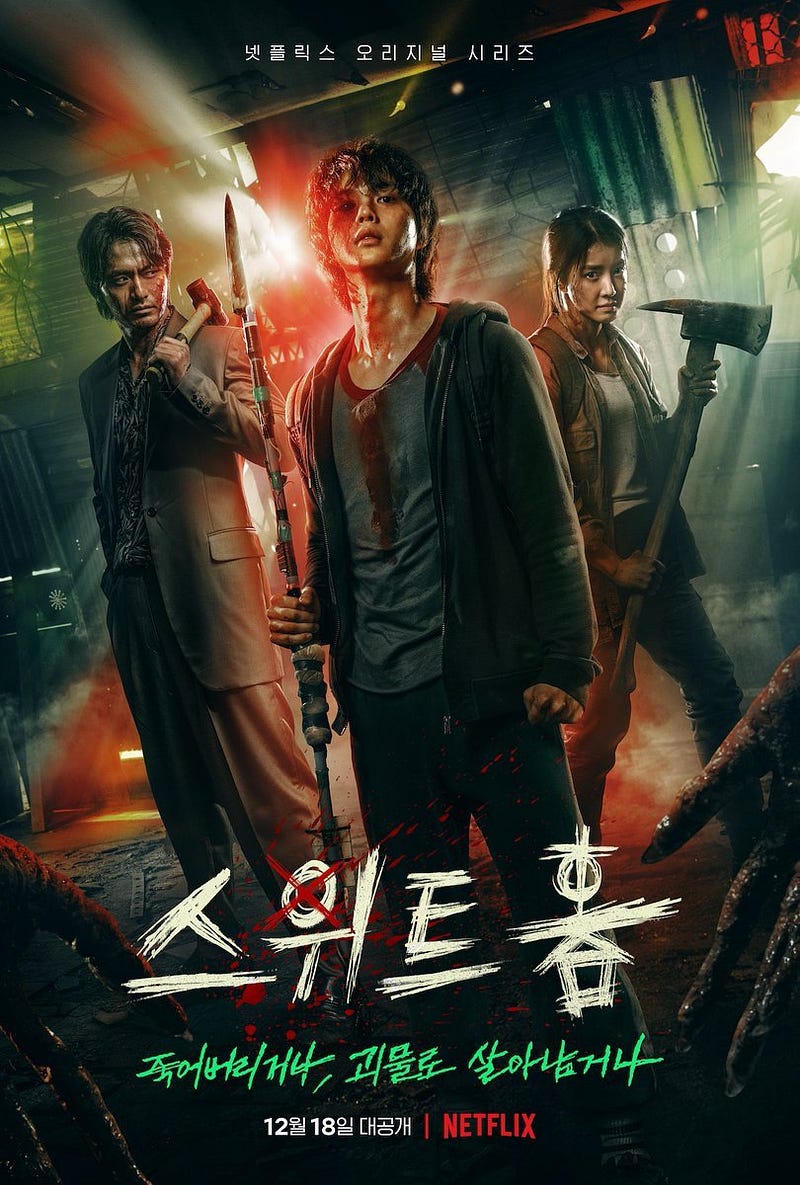
Content warning: This article includes mentions of suicide and depression.
With the third Hallyu (South Korean culture wave) upon us, interest in popular Korean media has surged. Streaming platforms like Netflix and Hulu have only encouraged that interest by uploading Korean content to their sites, resulting in thousands of non-Korean people watching and talking about the latest Korean shows and movies. Historical dramas such as
Mr. Sunshine
and
Reply 1998,
as well as blockbuster movies like
Burning
and
The Witch: Part 1. The Subversion
now have wider, more international audiences. Korean material has gained so much interest that Netflix gave Korea its own set of Netflix original series, including
Crash Landing On You
,
It’s Okay Not to be Ok
,
and
Kingdom.
The latest of these original series is
Sweet Home,
a show based on the popular Korean horror webtoon of the same name, written by Kim Carnby and illustrated by Hwang Young-chan. Though its first season premiered only ten episodes just this past December, the show has already risen to the top among currently-streamable Korean media, an impressive feat considering its comparatively short time on the platform.
At first glance,
Sweet Home
appears like the average
post-apocalyptic show. Severely depressed and orphaned Cha Hyun-su wakes up one day to find that the world is now overrun by human-possessing monsters, and he and his neighbors must work together to survive the monsters both inside and outside of their apartment complex. But unlike most post-apocalyptic material,
Sweet Home
uses its survival narrative as a vehicle to comment on suicide, mental trauma, and solidarity within a community. When the show begins, Hyun-su, tormented over his family’s death and believing himself truly alone in the world, plans to kill himself in his apartment. However, he begins to think otherwise once he finds a community for himself amongst the people he rescues and those he fights alongside. Thrust together by the apocalypse, the people in his apartment complex work together in small groups to survive, and Hyun-su gets included in these groups without hesitation, a fact which slowly makes him realize that there are people in this world who care about his life.
The crucial messages of
Sweet Home
apply not just to Hyun-su, but to Hyun-su’s neighbors as well. Firefighter Seo Yi-kyeong lost her husband two days before their wedding. Yoon Ji-soo, the bass guitarist who lives above Hyun-su, moved into the apartment complex after her boyfriend committed suicide. Ahn Sun-young experiences abuse from Kim Suk-hyun, her husband and the apartment’s grocery store owner. Almost every important character in the show appears to wrestle with some form of mental trauma, especially when the apocalyptic circumstances of the show grow direr.
As for
Sweet Home’s
monsters, they often act as a metaphor for the consequences of repression. In this show, people become monsters only after succumbing to their deepest desires. A starving person turns into a monster that consumes everything in its path, while another person turns into a long-limbed creature after failing to reach his arm out to rescue his son. Hyun-su himself has one of these monsters in his mind, and it constantly encourages his suicidal thoughts by berating his every move. In Hyun-su’s case, his monster turns into a symbol of the intrusive thoughts one may experience when severely depressed.
Though
Sweet Home
tends to have more action-adventure energy than the original webtoon’s thriller-horror atmosphere, it is still an amazing series that shows how a simple narrative premise has the potential to promote important messages that do not necessarily relate to it. Repression, existentialism, and mental trauma do not immediately come to mind when someone says that the world is ending, yet
Sweet Home
comments on all of these subjects in a profoundly unique post-apocalyptic storyline that has gained mass approval from both critics and casual viewers on Netflix.
The first season of Sweet Home is available for streaming on Netflix.
















